There are some places on Earth, that in my lifetime, it just hasn’t been possible to visit. One of them is the Democratic Republic of Congo (DRC). As a general rule, any country which calls itself democratic, firstly isn’t and secondly, is usually a dammed dangerous place. The DRC fullfills all these requirements! And yet, I have always wanted to go. Vast tracts of lowland rainforest, verdant montane forests and some magnificant mammals, not to mention the birds!
The eastern part of the DRC is probably one of the most dangerous places on this planet. Warring factions have been fighting here since 1998, involving nine African nations and over twenty different armed groups. A peace accord was signed in 2003, but has had little effect, fighting still rages on today. It is an intermittent war, with innocent civilians being raped, multilated and killed with impunity. At the very core of this, is a battle for resources; rare minerals that we all use in our computers and mobile phones and of course, the valuable hard woods that we use for our furniture.
Nyungwe Forest looking west into the DRC.
Along the DRC’s eastern border, lies the small nation of Rwanda. A nation with its own troubled past, which climaxed in 1994, with the killing of between 800,000 and one million people, in around 100 days. The Rwandan genocide, certainly placed Rwanda on the world stage, but for all the wrong reasons. What is quite remarkable, is that this tiny nation state, seems to have recovered from this disaster. Today, it is peaceful, friendly and is trying hard to make its name, as a classic, African tourist destination. The magnificent Albertine Rift Valley straddles the border with Rwanda and the DRC. It is one of the largest blocks of montane forests in the world and many of the special birds of the DRC, can be seen in the Rwandan section. So, a birding team was assembled and Graham, Oscar, Mark and myself flew out to Kilgali via Nairobi.
The two areas visited were Nyungwe Forest
& Akagera National Park.
Graham, Oscar & Mark in the Irish Pub,
in Dubai Airport.
The last segment of this journey is a daytime flight and what a spectacular flight it is! One passes through the Kenyan and Tanzanian savannas, before the spectacular Great Rift Valley opens up before you. In the distance, are the snow covered heights of Mount Kilamanjaro on one side and the vast Lake Victoria on the other! Before you know it, you are over Burundi and the equally huge Lake Tanganika is below you. It is a great flight and before you want it to, the flight ends and you are touching down at the relatively small airport, which marks the Rwandan capital Kigali.
The parched grasslands, just west of Nairobi.
Mount Kilamanjaro, with just a topping of snow,
A tiny part, of the immense, Lake Tanganika.
The first thing that struck me about Rwanda was the cleanliness. The whole place is spotless! Now, those of you who are used to travelling on the African continent will recognise that this is kind of unusual! The second thing was the people, courteous, smiling and very friendly. Remarkably, the dark, recent past, seems to be behind them and they are looking forward. to a more united future.
William, our Ugandan driver & very good, excellent,
all round guide.
Our driver, William was there to meet us, having just driven over the border from Uganda and we set off on our journey to the far eastern border of Rwanda. Our destination was Nyungwe National Park, which straddles the border with the DRC.
Nyungwe National Park, one of the largest blocks
of Afro-montane forests.
Nyungwe is famous for both the variety & numbers
of primates; as you can see from the photograph!
The journey was uneventful, with few bird sightings, as every inch of land seems to be taken over for small scale subsistence farming. But then you cross into the national park and the lanscape is transformed into a lush evergreen forest. This must have been the landscape for most of Rwanda a hundred years ago. The scenery is splendid and the views down to Lake Kivu are spectacular. We couldn't wait to get started!
Looking towards Lake Kivu & the DRC.
Our four night stay was based at the national park's Forest Lodge, a modest, but superbly situated little place. It is just outside the forest proper, surrounded by a tea estate and the garden has been planted with a variety of trees and shrubs.
Nyungwe Forest Lodge -
our home from home for a few nights.
The next morning, birds were zipping about everywhere and one species in particular, the White bellied Blue Flycatcher gave us all stunning views-feeding young, on the garden fence. Welcome to birding Rwanda guys!
Chubb's Cisticola, was common in the gardens
& open areas, surrounding the lodge.
We met up with our bird guide, Narcisis (yes, that is his real name)!The next four days were spent on a variety of trails, of various steep and slippyness! However, it was a pleasure to be there, exploring one of the world's great blocks of montane forest. Birds came thick and fast and the first day saw us tally 16 of the Albertine Rift Endemic species.
Narcisus! Yep, I know!
The British & Irish Lions bird touring team.
Fine specimens, every one of them!
The touring team in action!
Photo courtesy of Graham Talbot.
The forest trails were often steep and slippy.
Jilly, this is what happens to Oscar,
when you are not around!
Graham, did a fantastic job with the I-Pod all week,
despite, being handicapped by me!
Looking down towards the swamp.
Rwenzori Batis
A recently fledged Red-crested Alethe.
The formidable, monkey-eating, Crowned Eagle.
Crowned Eagles specialise in killing all types of monkeys,
including the large Blue Monkey.
They have also been known to prey upon small antelope species
& their strength is legendary!
One day we descended in the rain down to the swamp to try and see Red-chested Flufftail and Grauer's Swamp Warbler. Our apparent bad luck on the weather (it was now pouring down with rain) turned into a bit of a blessing, when we sheltered under the newly contructed look out point. We were now protected from the elements and could do a little bit of birding.
Mark, ready for action! The little flirt!
Hardwoods, like this Mahagony tree,
are targets for illegal loggers.
Archer's Robin-chat.
Streaky-headed Seedeater
Photo courtesy of Oscar Campell.
We tried the flufftail tape and immediately one responded! Graham did us all proud with his running up and down, positioning the tape in the pouring rain, while the more fortunate (ie dry members of the party) smiled on! After around an hour, persistence paid off and between us we saw (glimpsed) 3 individuals including a stunning adult male. Smiles all round and we celebrated by eating dry, but very welcome biscuits! Oh, did I mention we also had great views of the swamp warbler as well? As the rain started to ease, we moved on around the circuit and eventually we were bathed in sunlight, on the valley floor. Great birds and stunning scenery. It really was a great morning's birding.
Dusk, settling across the forest.
The distant hills are in the DRC.
A farewell to this great forest!
Photos courtesy of Oscar Campell.
All too soon, we had to leave this magical place and start on our journey to Akagera National Park. But the forest wouldn't let go, it's hold on us and birds and mammals kept leaping into view and impeding our progress! Eventually, we just had to drive, but everyone kept looking back over their shoulder for one last glimpse of these superb evergreen forests. The first part of our trip had been a resounding success, but what about our next destination?
On the outskirts of the capital, is a marsh, of papyrus and reedlands. It holds some rare and threatened species, all of which have one thing in common- they are very difficult to see! Mid afternoon, is never a great time for birding in the countries that border the equator, but four pairs of eyes, steadily notched up the species. The couple of hours we spent here, were very rewarding, with everyone adding to their world tally.
Long-crested Eagles are a common sight
along Rwandan roads.
Pink-backed Pelican, in the early morning mist.
The pretty, Grey-headed Sparrow
is the city sparrow, in Rwanda.
Mark and I, opted for a late lunch, while Graham and Oscar visited the genocide memorial. They found it informative and well done. I decided not to go, because if I do come back with Carol, then I know, she will want to go there.
The Kigali Genocide Memorial.
We drove for another hour and arrived at our hotel quite late. I was excited, because we were going to Akagera! I didn't sleep well.
The capital city, Kigali ,is spread over
a number of rolling hills.














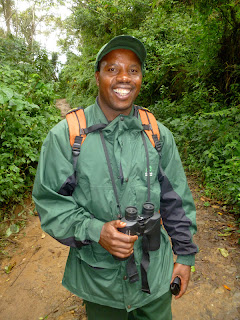





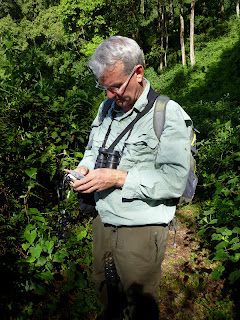


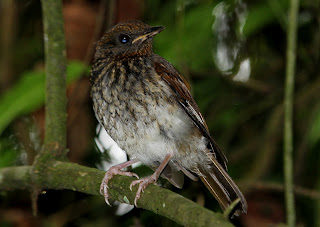




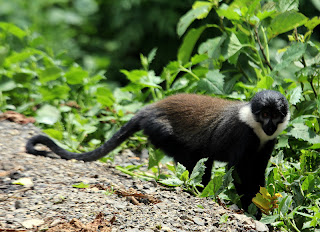







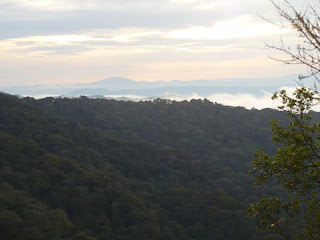









The Nyungwe Forest is also the location of the furthest source of the Nile The Kagera River, located by a British Explorer Neil McGregor in 2006. It is red with silt but was red with blood of the victims of the 1994 genocide and is one of the reasons why Rwanda resists renaming the Kagera The Red Nile - despite the attraction this would be to tourists. McGregors team travelled 4,163 miles from the delta to the source of which the Kagera is 371 miles 597 km. Another factor is that if Lake Kivu adjacent to the Nyungwe Forest were to be violently disturbed the massive methane and CO2 deposits could kill 2 million people living on its shores.
ReplyDeleteThe author of this comment is Garth Gunston as confirmed by the email address. I am currently writing a political mystery thriller based in the volcanic Virunga Park /Lake Kivu area area and my research has thrown up these remarkable additional facts in addition to my own visit in 2016.
Delete